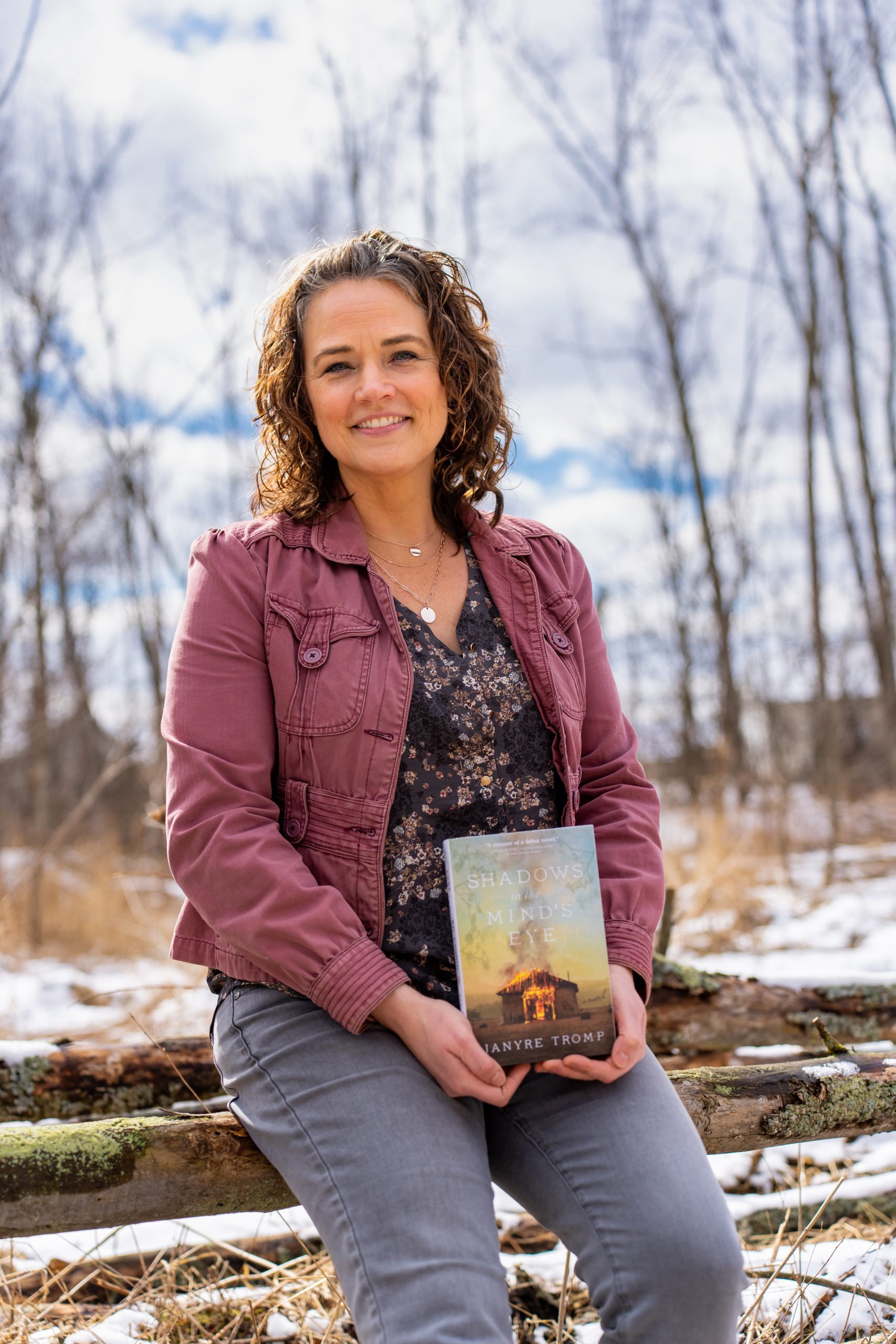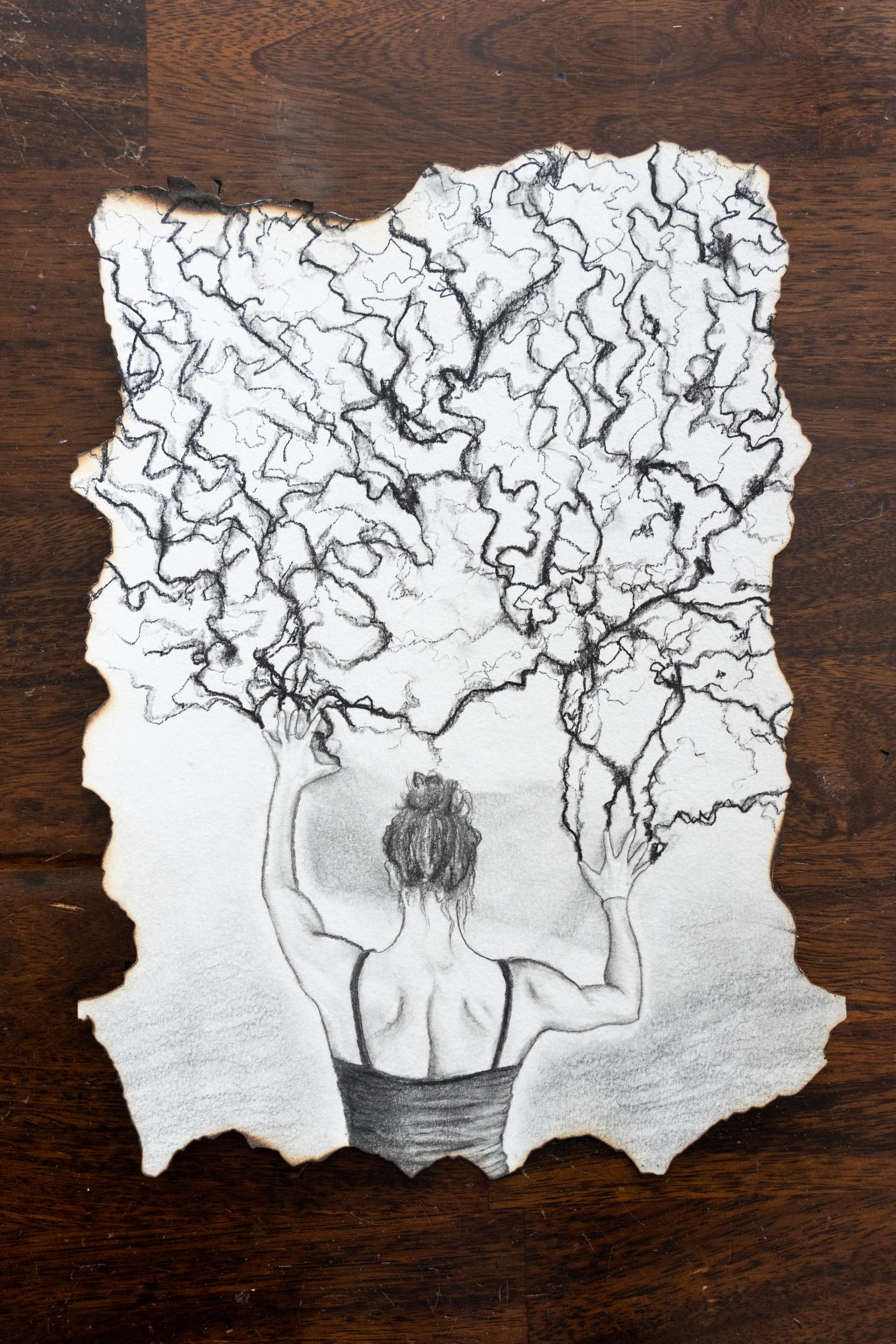Janyre Tromp knows something about PTSD. She suffers from post-traumatic stress disorder due to childhood trauma. She experienced it as a result of her daughter’s long illness, which brought to the surface her childhood experiences once again. Combine that with stories from her grandfather’s experiences in World War II and a friend’s family history, and she had the makings of a novel.
“Shadow in the Mind’s Eye,” which released in April and is published by Grand Rapids-based Kregel Publications, is the story of Sam and Charlotte Anne (Annie) Mattas, who must together face the demons from Sam’s years fighting with the U.S. Navy during World War II and the demons that seem to have followed him to their Ouachita Mountains home.
Sam, and others, think he’s seeing things when he begins to note strange things going on near his home. He’ll do anything to protect Annie and their daughter Rosie, including leave if his nightmares and outbursts endanger them. Annie, meanwhile, struggles to understand what her husband experienced during the war and its aftermath. Add to their personal drama the rampant mob, gambling, and drug activity in the area and Sam is ripe for some kind of breakdown.
Interest in history
Tromp’s interest in history started in college when she was given an assignment to interview someone who had experienced the Great Depression or World War II. Her grandfather had been a liaison pilot in the European theater and had been shot down over Germany. History tells us that seven out of 10 liaison pilots — those who helped direct fire for artillery, fighters and bombers, among many other roles such as delivering supplies to the front lines — didn’t return alive.
Her grandfather had PTSD when he came back from the war yet seemed to have overcome its effects years later when Tromp talked to her long-married grandparents.
“A lot of writing starts with a question,” Tromp said. “I wondered how they had gotten from there, with him coming back from the war with PTSD, to where they were and their good marriage years later.”
She also tapped into a friend’s history of her Arkansas family who lived in the Ouachita Mountains (pronounced WASH-i-tah) near Hot Springs. “That area was the largest illegal gambling site in the nation at that time,” Tromp said. “And it was all sanctioned by the town’s mayor. Owney Madden, a gangster who moved to Hot Springs, is a real person, as is the mayor of the city. But the judge, Annie’s father, is a fictional character.”
Tromp started writing the novel three-and-a-half years ago but set it aside when her teenage daughter Bryanna got sick with a mysterious illness. She was sick from October to March, enduring endless tests, pain and hospital stays. Tromp recounted her grandparents’ stories to pass the time and take Bryanna’s mind off the pain, yet this concerned mother also faced her own PTSD once again.
“The PTSD I experienced from Bryanna’s illness was fed by the PTSD from my childhood trauma. It echoes back to that feeling that there was no protection, that life is out of control. It’s a chaotic space to be, a bottomless pit,” said Tromp. “I had to go all the way back and deal with it again.”
She recalled being suicidal in high school, the distress triggered again by her daughter saying “just let me die” when she was so tired of the pain and being sick. “It’s all connected. You can spiral out of control, but also spiral back into control. But you hit the same pain points going up or down,” Tromp said. “Part of my PTSD is reacting when someone comes after my kid. No one was there to protect me when I was young, so I have to think about my reactions to someone hurting my child.”
The power of story
Yet Tromp, a developmental editor for Kregel Publications, realizes the power of story. It’s why she writes fiction. “If I were to tell you about PTSD — how many people have it, the symptoms — it would activate the information center in the brain. But if I tell you a story about my childhood and my daughter’s illness, that would activate the experiential portion of the brain along with the information center.”
That knowledge is why she writes about Sam Mattas and the PTSD that threatens his family, his friends and his own life. It’s why she talks about her own PTSD and that of her daughter.
“Because of the trauma I went through, she’s getting counseling. I look at the circumstances not as something that holds me back, but that can help others,” Tromp said. “It’s hard work to go through all that, but it’s a good thing to do. Everyone has crap, but if we aren’t willing to engage with one another or listen to one another’s stories, there’s no healing. We may not agree on how to move forward, but we can agree that our story has value and worth.”
Tromp finished “Shadow in the Mind’s Eye” after her daughter recovered, saying, “different flavors came out because I had that additional layer of pain and fear.”
She points to EMDR (eye movement desensitization and reprocessing) as a huge help (see sidebar), as well as visualizing a safe place when symptoms occur, and books such as “Try Softer: A Fresh Approach to Move Us out of Anxiety, Stress, and Survival Mode — and into a Life of Connection and Joy,” by Aundi Kobler, and “The Body Keeps the Score: Brain, Mind, and Body in the Healing of Trauma,” by Bessel van der Kolk.
Tromp also keeps writing. She’s written three children’s books and a Christmas novella, and Kregel will release “O Little Town,” another Christmas novella, soon.
“These are important things to talk about, to say that we had these experiences,” said Tromp. “When we learn from each other’s stories, we find a way through.”
Understanding PTSD
Susan Littlejohn is a therapist and trauma treatment specialist, as well as Holland Clinic Manager for Pine Rest Christian Mental Health Services. She works with people experiencing PTSD and trauma daily.
“PTSD is not a choice or a failure to cope,” she said. “It’s a normal reaction to abnormal circumstances. PTSD impacts the brain-mind-body connection and comes with a whole set of physiological symptoms.”
She describes symptoms such as heart pounding, trouble breathing, sweating, trembling and rapid breathing, as well as being fatigued and listless one moment and hyperactive the next. Part of the answer, she said, is to learn to manage those symptoms. One way is through EMDR, which has patients recreating the eye movements experienced during deep sleep.
“During the deep stage of sleep, we take the sensory experiences and memories of the day from temporary, working memory, assign meaning to them, and file these memories away in more permanent storage in the brain. When traumatized, the brain doesn’t do that processing work,” Littlejohn said. “The trauma stays in the working memory instead of being processed and stored away. Therefore, the traumatic experience from the past feels like it is still happening in the present moment, causing complex reactivity.”
EMDR manufactures that eye movement to help the brain reprocess those memories and store them in a different way. “EMDR can help people process in a safe way,” Littlejohn said.
Littlejohn encourages those experiencing PTSD or who have experienced trauma to build a support team, which can include a therapist, physician, family and friends. She also points to mindfulness practices, walking outside and building connection.
“Nothing is more isolating than trauma. We are afraid, withdraw, and think no one understands, which can be a lonely and terrifying experience,” Littlejohn said. “Part of getting better is reconnecting to ourselves, our childhood, one another, our bodies, the world and our creativity.”
Recommended reading:
“Healing Trauma: The Pioneering Program for Restoring the Wisdom of Your Body,” by Peter A. Levine
“Walking the Tiger: Healing Trauma,” by Peter A. Levine
“The Complex PTSD Workbook: A Mind-Body Approach to Regaining Emotional Control & Becoming Whole,” by Arielle Schwartz
“Trauma-Sensitive Mindfulness: Practices for Safe and Transformative Healing,” by David A. Treleaven
“Lost Connections: Why You’re Depressed and How to Find Hope,” by Johann Hari
This story can be found in the May/June 2022 issue of Grand Rapids Magazine. To get more stories like this delivered to your mailbox, subscribe here.











Facebook Comments